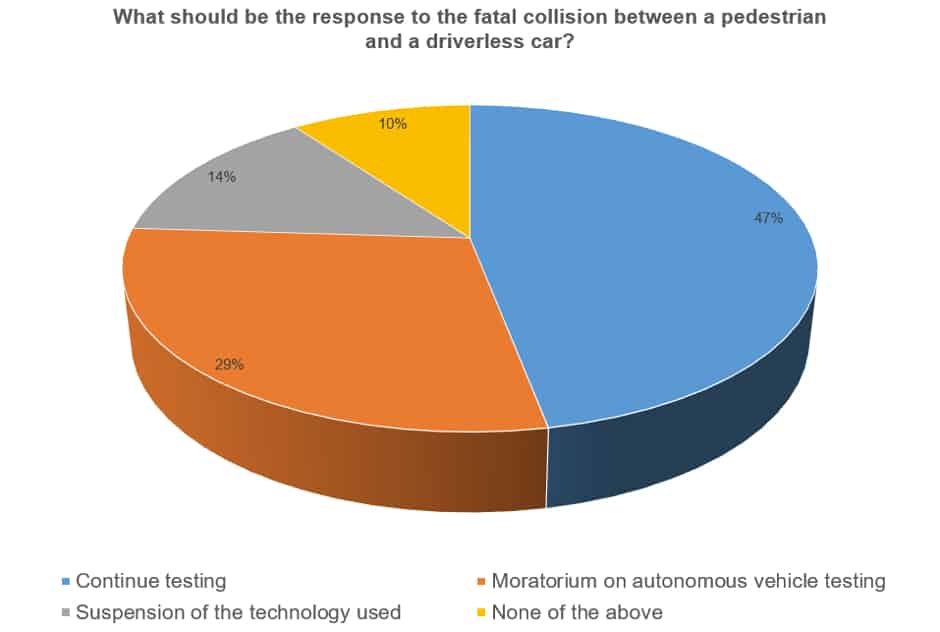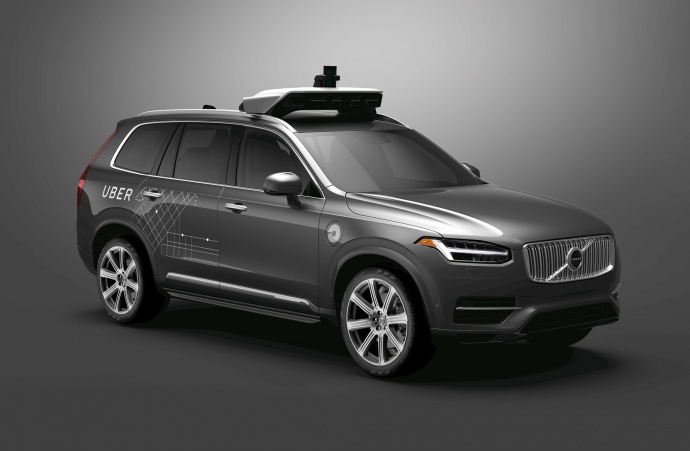
Elaine Hertzberg was struck by a driverless vehicle being tested by taxi hailing app company Uber. Hertzberg was crossing a road away from a designated and illuminated pedestrian crossing at around 10pm when the collision occurred with a Volvo XC90 SUV that had a human observer behind the wheel. The vehicle was travelling at 38mph in a 35mph zone and did not attempt to brake.
The US Consumer Watchdog organisation called for a national moratorium on autonomous vehicle testing, saying that “there should be a national moratorium on all robot car testing on public roads until the complete details of this tragedy are made public and are analysed by outside experts.”
Following the accident, Uber suspended autonomous vehicle trials in all North American cities while an investigation takes place. The company had been testing in Pittsburgh since 2016 and was also carrying out trials in San Francisco, Toronto and the Phoenix area, which includes Tempe. Arizona Governor Doug Ducey has since suspended Uber’s autonomous vehicle testing program.

The tragedy prompted The Engineer to ask how industry should respond, with nearly half (47 per cent) of the 903 respondents agreeing that testing should continue, followed by 29 per cent who think there should be a moratorium on autonomous vehicle testing. Of the remaining vote, 14 per cent agree that there should be a suspension of the technology used, and 10 per cent chose ‘none of the above’.
To date, 86 comments have been published in response to the poll, with opinion largely polarised between those who are pro-and-anti autonomous vehicles, and those questioning the Volvo’s speed when the collision occurred.
Michael Morley wrote in to say: “Driverless cars will happen one day, but there needs to be a considerable improvement in AI technologies before these cars exceed the safety record of the very best human drivers. I see a future in which automated driving is commonplace – where the current situation of 1.3 million deaths a year in road accidents becomes an outlandish nightmare.”
“I think it only fair that we wait until all the facts are known,” added Duncan Fallow. “Whilst the fatality is tragic would this incident have garnered the press coverage if the vehicle was being driven solely by a human? CNBC estimated that there were around 40,100 traffic related deaths in the USA in 2017 – nearly 110 a day. Autonomous vehicles offer the opportunity to reduce these casualties significantly by taking the ‘human element’ out of the equation.”
Richard Grey asked: “What is the point of driverless cars?” whilst Ekij queried how the vehicle was travelling at doing 38mph in a 35mph zone. “Humans creep over the speed limit sometimes because we’re distracted or miss a speed-limit sign, but an autonomous vehicle has no such excuses.”
What do you think? Let us know via Comments below.




JLR teams with Allye Energy on portable battery storage
This illustrates the lengths required to operate electric vehicles in some circumstances. It is just as well few electric Range Rovers will go off...